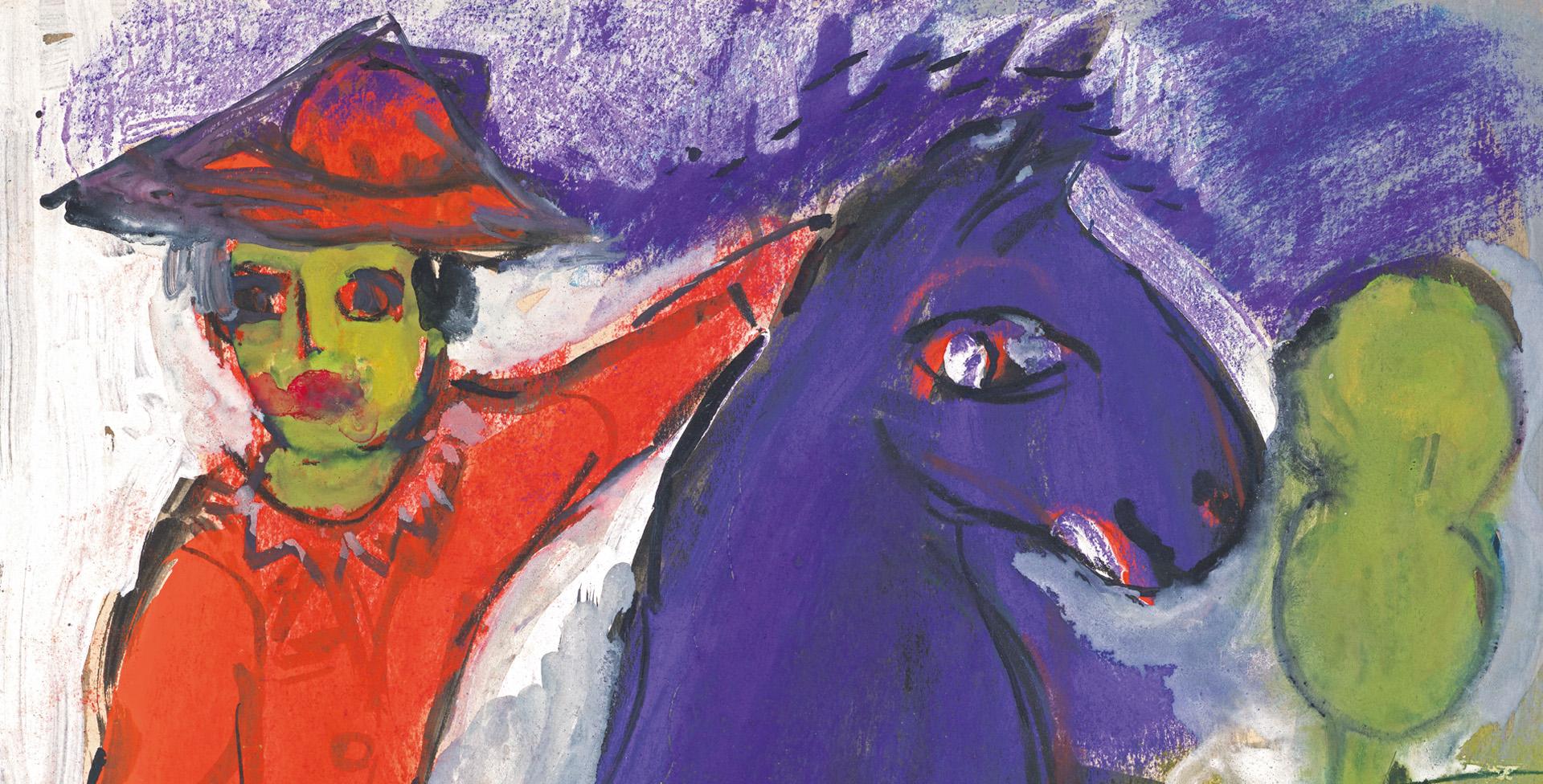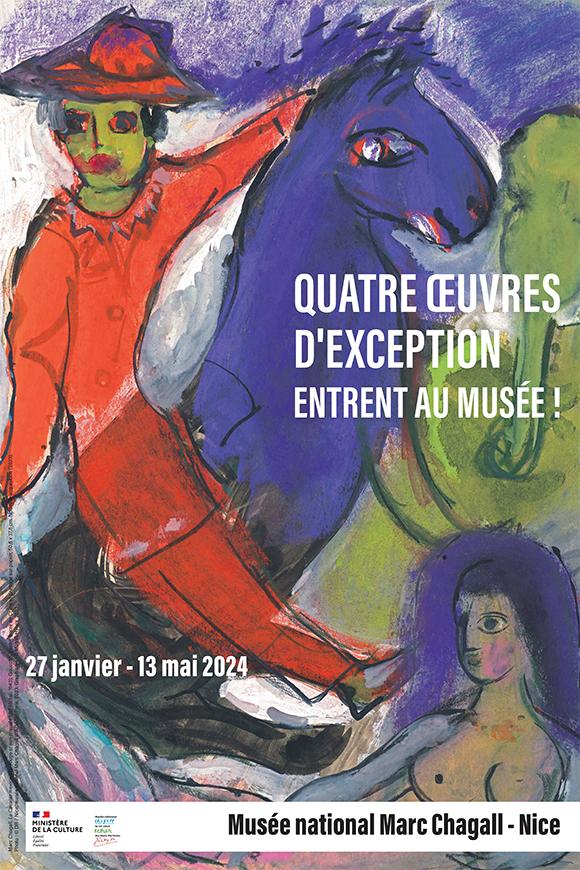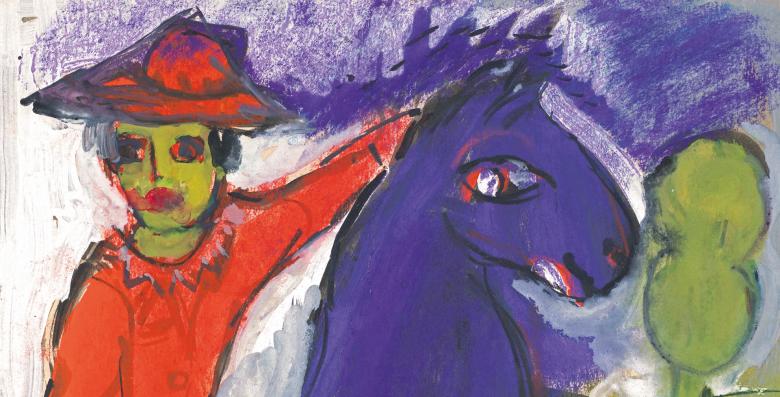Chronology (non-exhaustive) of Marc Chagall (1887-1985)
1887
Marc Chagall was born on July 7 in Vitebsk (modern-day Belarus) into a family of Hasidic Jewish shopkeepers.
1906-1910
He enters the studio of painter Yuri Pen before moving to St. Petersburg, where he attends the Zvantseva School and Leon Bakst's studio.
1911-1914
He arrives in Paris on a scholarship and settles at La Ruche, where he discovers the Avant-garde artists. In 1912, he exhibits at the Salon d'Automne and the Salon des Indépendants de Paris. In 1914, he returnes to Russia, intending to stay only a few months, but the war forces him to stay.
1915-1917
He marries Bella Rosenfeld. The couple settles in Petrograd, where they make friends with poets, artists and literary critics. Their daughter Ida is born in May 1916.
1918-1921
Appointed Fine Arts Commissioner for the Vitebsk region, he sets up an art commission to decorate the city in honor of the first anniversary of the Revolution, before announcing the creation of an art school, which he leaves in 1920. He is invited to paint murals for the walls of the Jewish Art Theater in Moscow.
1922-1923
He leaves Russia for good, with all his works, to settle in Berlin.
1923-1927
He returns to Paris and begins working with the art dealer Ambroise Vollard on illustrations for Gogol's Dead Souls (1924-1925), La Fontaine's Fables (1926-1928) and the Bible (1930-1939).
1930-1931
At the invitation of the mayor of Tel Aviv, the Chagall family travels to Palestine for the first time to find inspiration for the book Bible and discuss the creation of the Tel Aviv museum.
1933
After Chancellor Adolf Hitler comes to power, a work by Chagall is burned in the Mannheim auto-da-fé. His application for French citizenship is rejected. Political events have a strong impact on his works.
1934-1938
From 1937, Chagall's works echo the increasingly worrying political situation in France. He becomes a French citizen in 1937. Three of his works in German museums are considered as "degenerate art" by the Nazi regime.
1941
Thanks to an invitation from the Museum of Modern Art in New York and the help of Varian Fry, he leaves Europe for the United States. In New York, Pierre Matisse becomes his dealer.
1942-1944
A trip to Mexico proves to be a real discovery. He designes the sets and costumes for Tchaikovsky's ballet Aleko, which premiered in Mexico City on September 8, 1942. In 1943, Chagall is stripped of his French nationality by the Vichy regime.
1944
Death of Bella Chagall.
1945-1946
Designs costumes and sets for Stravinsky's The Firebird for the New York City Ballet. He meets Virginia McNeil, who gives birth to their child David in 1946. The couple settles in High Falls. Retrospective at the Museum of Modern Art in New York, then at the Art Institute in Chicago.
1948
Returns to France and moves to Orgeval. Aimé Maeght becomes his dealer in France. The publisher Tériade acquires all the engravings in the Vollard collection and proposes new projects for illustrated books. Production of Les Âmes Mortes (the Fables published in 1952, Bible in 1956). He wins the engraving prize at the Venice Biennale.
1949-1952
Moves to Vence in 1950. He is introduced to ceramics, which leads him to sculpture in terracotta and marble. Commissioned by Tériade to illustrate Daphnis et Chloé. First trip to Greece.
1953-1960
Chagall begins the Biblical Message series of paintings in 1955 (completed in 1966). Beginning of his collaboration with stained-glass master Charles Marq and the Simon workshop in Reims, with whom he creates the stained-glass windows for Metz Cathedral in 1959.
1961-1962
Daphnis et Chloé, illustrated with color lithographs, is published by Tériade. Inauguration of the twelve stained-glass windows in the synagogue of the Hadassah hospital in Jerusalem.
1963-1964
At André Malraux's request, he works on the ceiling of the Paris Opera, inaugurated in 1964..
1966
Works on two monumental paintings commissioned by New York's Metropolitan Opera. He creates the sets and costumes for The Magic Flute. He donates the Biblical Message cycle to the French State. He leaves Vence to settle in Saint-Paul-de-Vence.
1967-1970
Publication of Cirque illustrated with lithographs and edited by Tériade. Creation of the mosaic The Message of Ulysse for the Faculty of Law in Nice in 1968.
1973
Inauguration of the Musée national Message Biblique Marc Chagall in Nice in the presence of André Malraux.
1974-1977
Inauguration of the stained glass windows at Reims Cathedral and the Four Seasons mosaic in Chicago.
1979-1981
Inauguration of stained-glass windows at St. Stephen's Church in Mainz, Chichester Cathedral and the Art Institute of Chicago.
1984
For his 97th birthday, a series of exhibitions is organized by the Musée national d'Art moderne in Paris, the Fondation Maeght in Saint-Paul-de-Vence and the Musée national Message Biblique Marc Chagall in Nice.
1985
After a final work session with his lithographer friend Charles Sorlier, Marc Chagall dies at his home in Saint-Paul-de-Vence on March 28, aged 98.



